Abstract
1. Measurements were made of the uptake, metabolism and release of [3H]-adrenaline by human platelets in citrated plasma or in an artificial medium.
2. Radioactive adrenaline was not taken up at 0-2° C. At 37° C there was a slow uptake which continued for at least 5 hours.
3. About half of the radioactivity in the platelets was intact adrenaline. The other half was an acidic metabolite from which adrenaline was released by acid hydrolysis.
4. The immediate uptake of adrenaline was proportional to its concentration in the plasma up to at least 1 × 10-5M. Uptake measured after 1 h also increased linearly with concentration up to about 1 × 10-4M but less with higher concentrations. The highest concentration ratio was about 12.
5. The concentration of metabolite in the platelets increased with the concentration of added adrenaline only up to about 2 × 10-4M.
6. The immediate uptake of adrenaline was partially inhibited by phentolamine and dihydroergotamine. Measurement of uptake both immediately and after 1 h showed that the inhibition produced was not increased beyond about 50% by these drugs or by (±)-propranolol, chlorpromazine or amitriptyline up to 1 × 10-4M.
7. Formation of the metabolite was inhibited by pyrogallol, 8-hydroxyquinoline, or tropolone. This inhibition was associated with a corresponding increase in the adrenaline accumulated intact. Formation of the metabolite was not inhibited by monoamine oxidase inhibitors.
8. Reserpine caused a small decrease in the uptake of adrenaline radioactivity in 1 h and a great increase in the proportion recovered as metabolite.
9. Thrombin caused the release from platelets of intact adrenaline but not of the metabolite.
10. Platelets of albino patients with spontaneous haemorrhages accumulated adrenaline radioactivity at the normal rate but this radioactivity was wholly accounted for by metabolite and not released by thrombin.
11. After taking up adrenaline, platelets resuspended in artificial medium at 37° C slowly released both adrenaline and its metabolite. At the same time, the intracellular adrenaline was slowly metabolized.
12. The Result suggest that human platelets take up adrenaline by two processes, one of which is inhibited by both α- and β-adrenoceptor blocking agents ad well as by phenothiazines; and that in the platelets adrenaline is partly stored in organelles from which, like 5-hydroxytryptamine, it can be specifically released.
Full text
PDF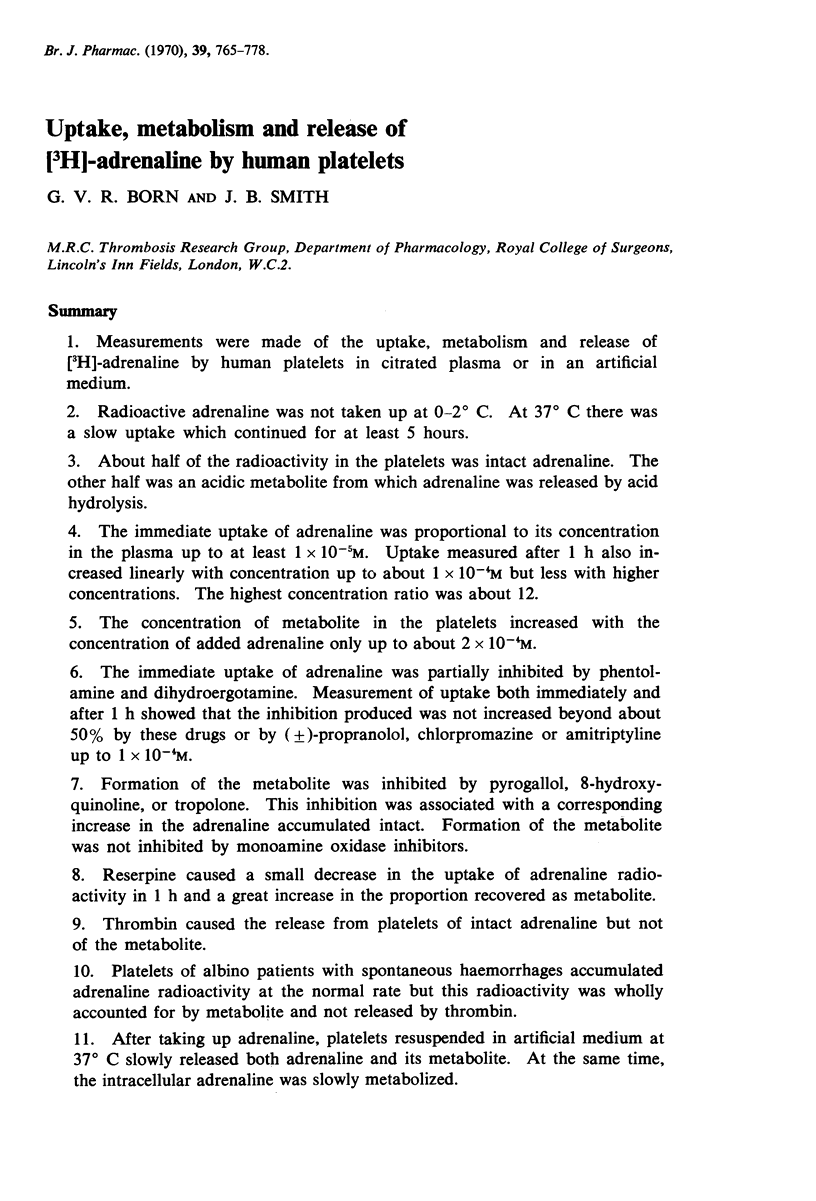
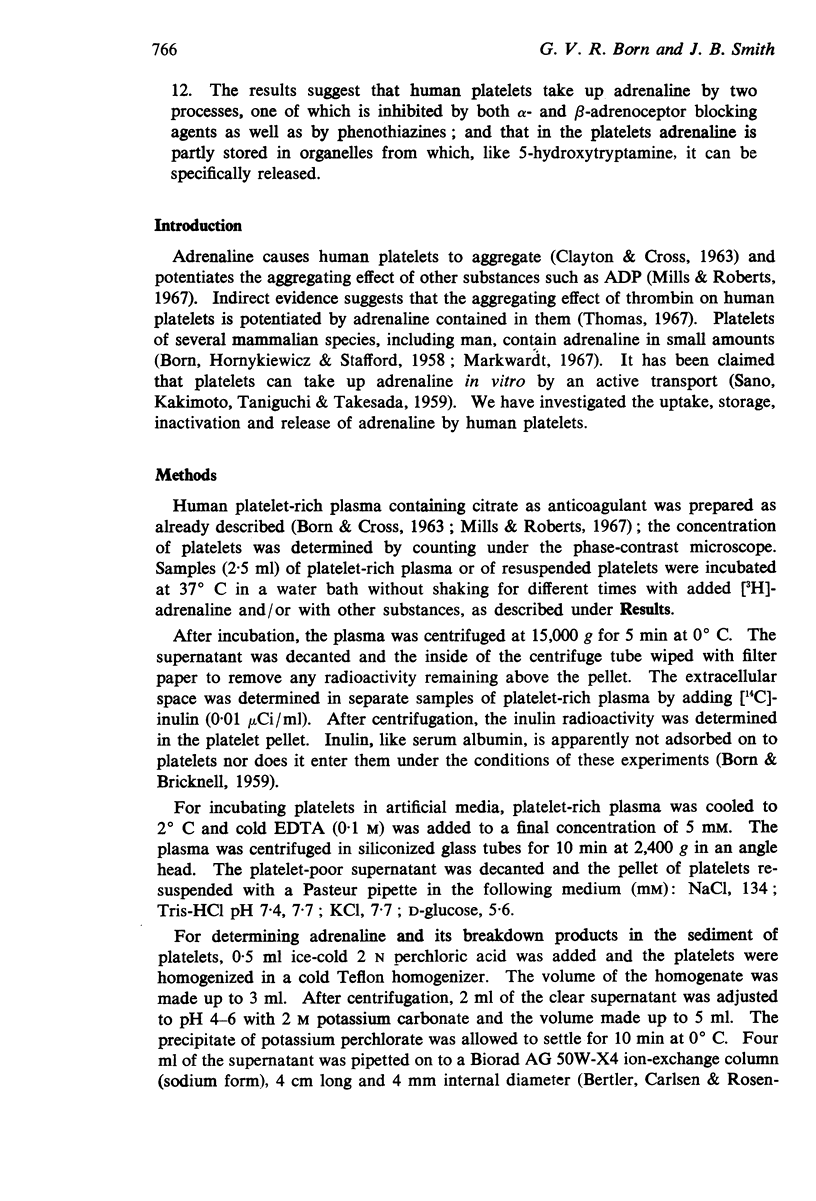
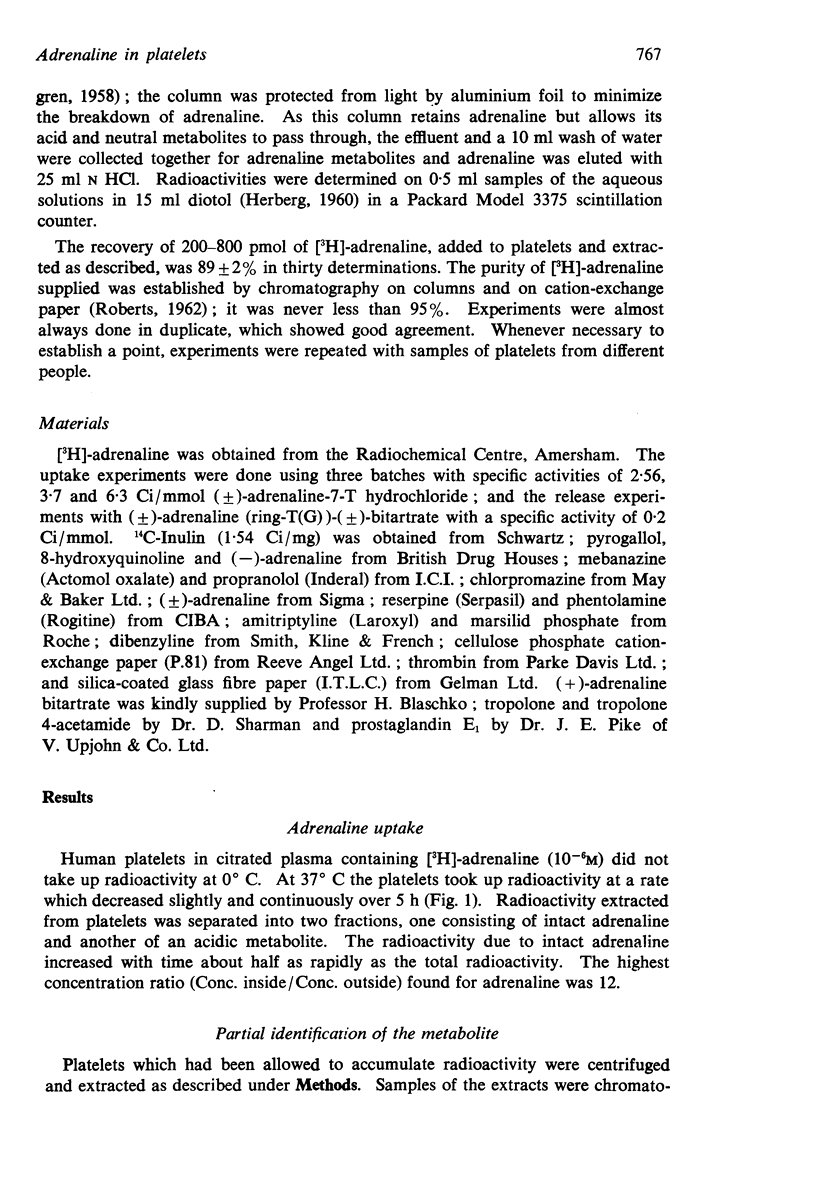
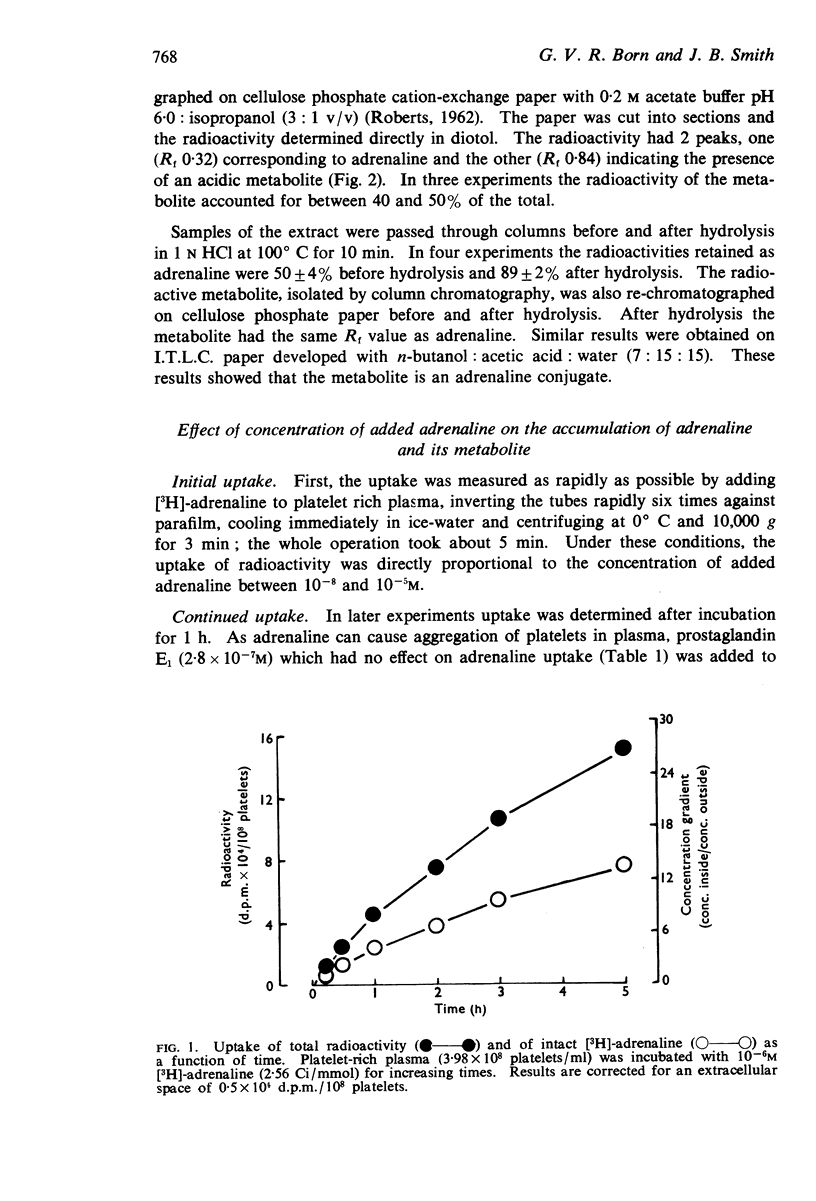
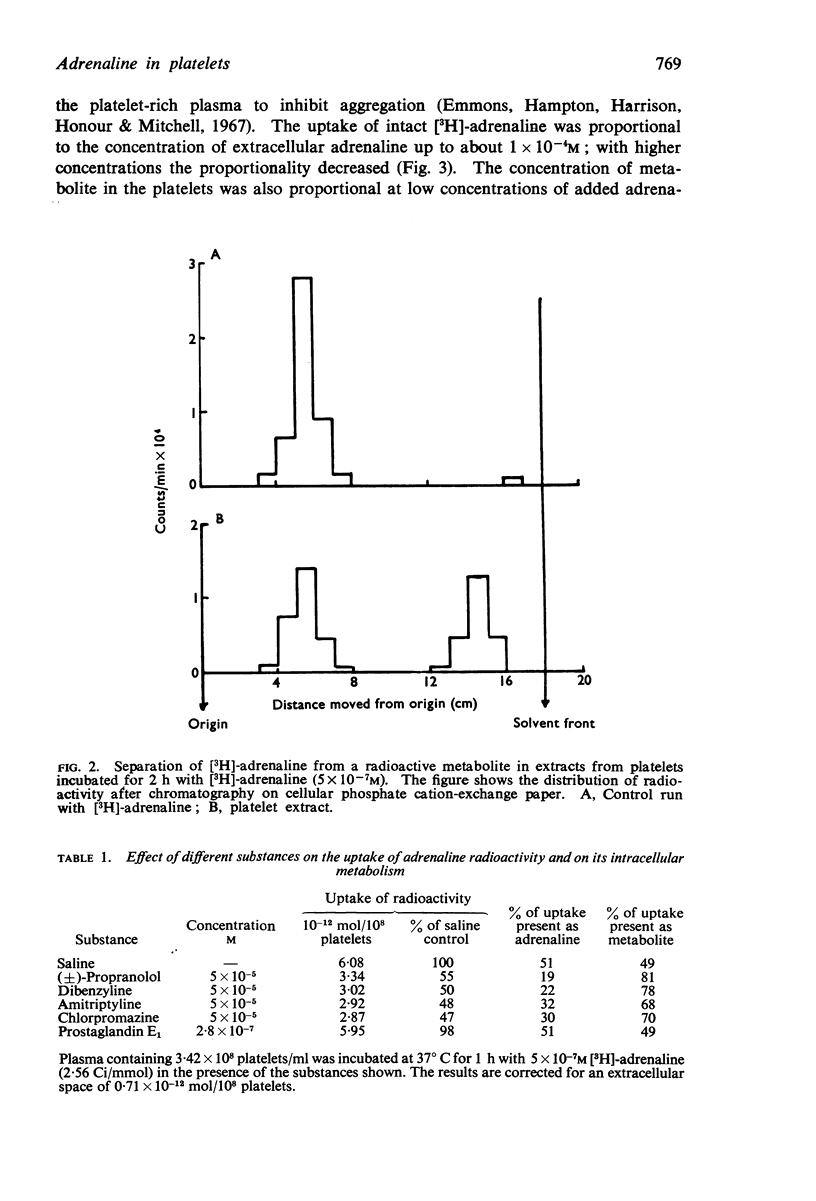
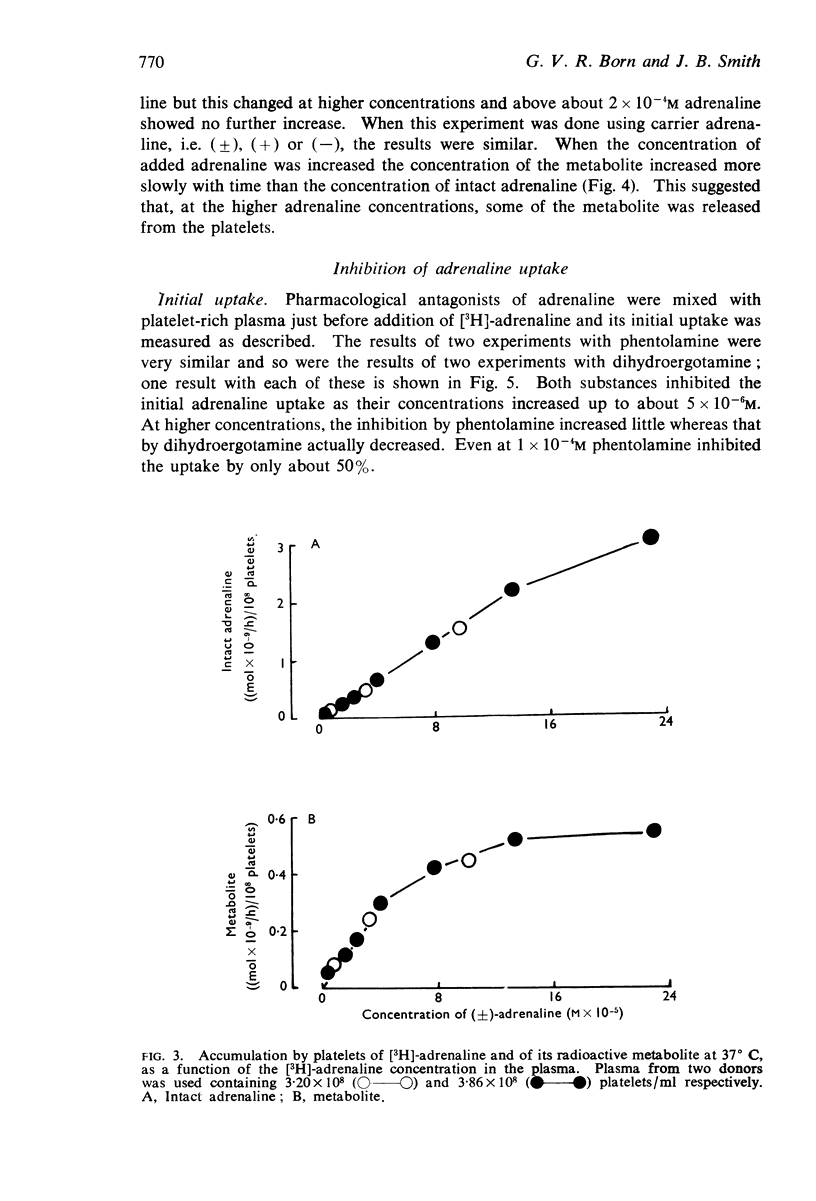
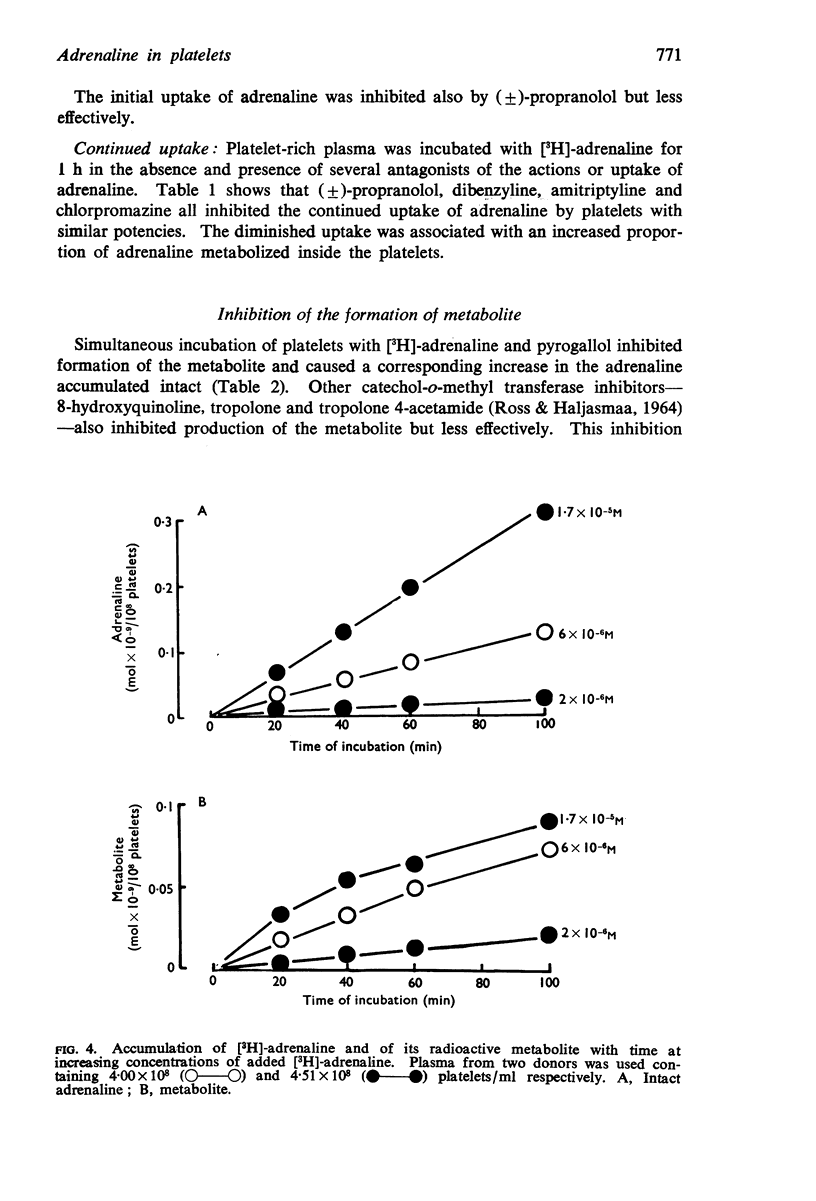
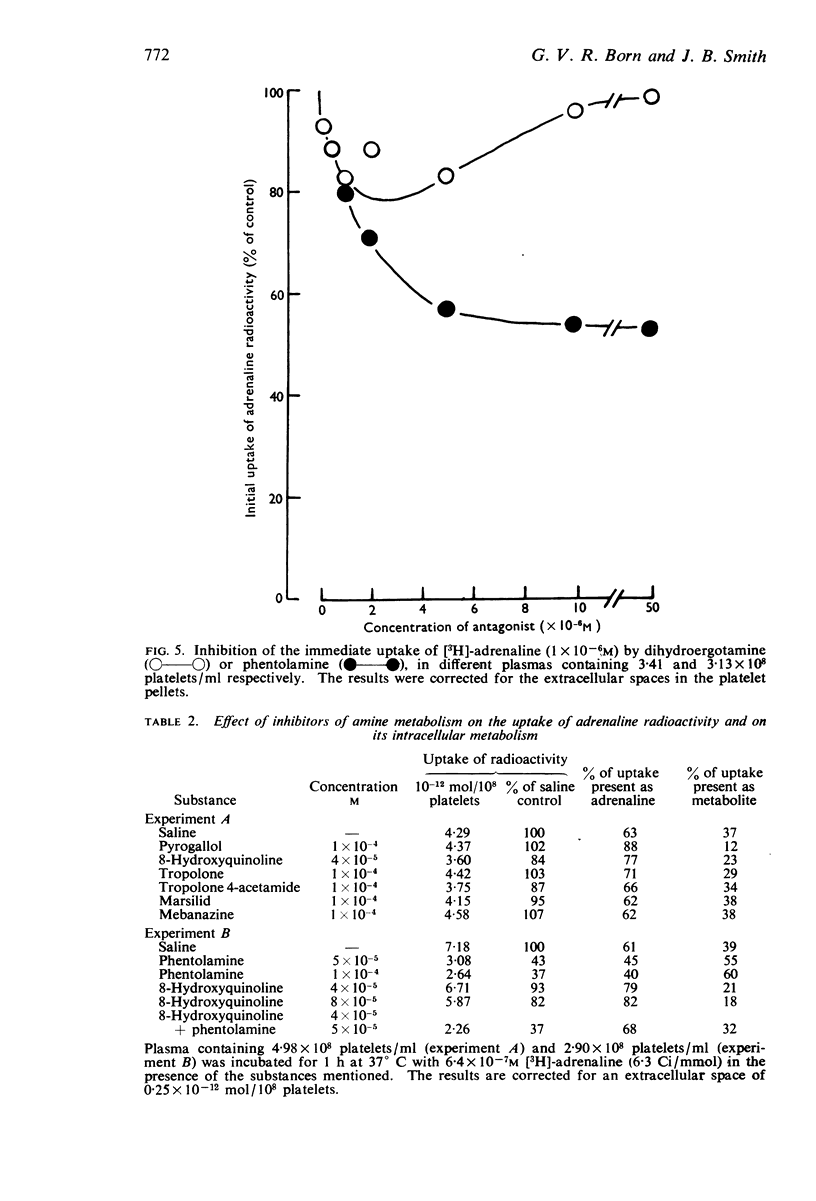

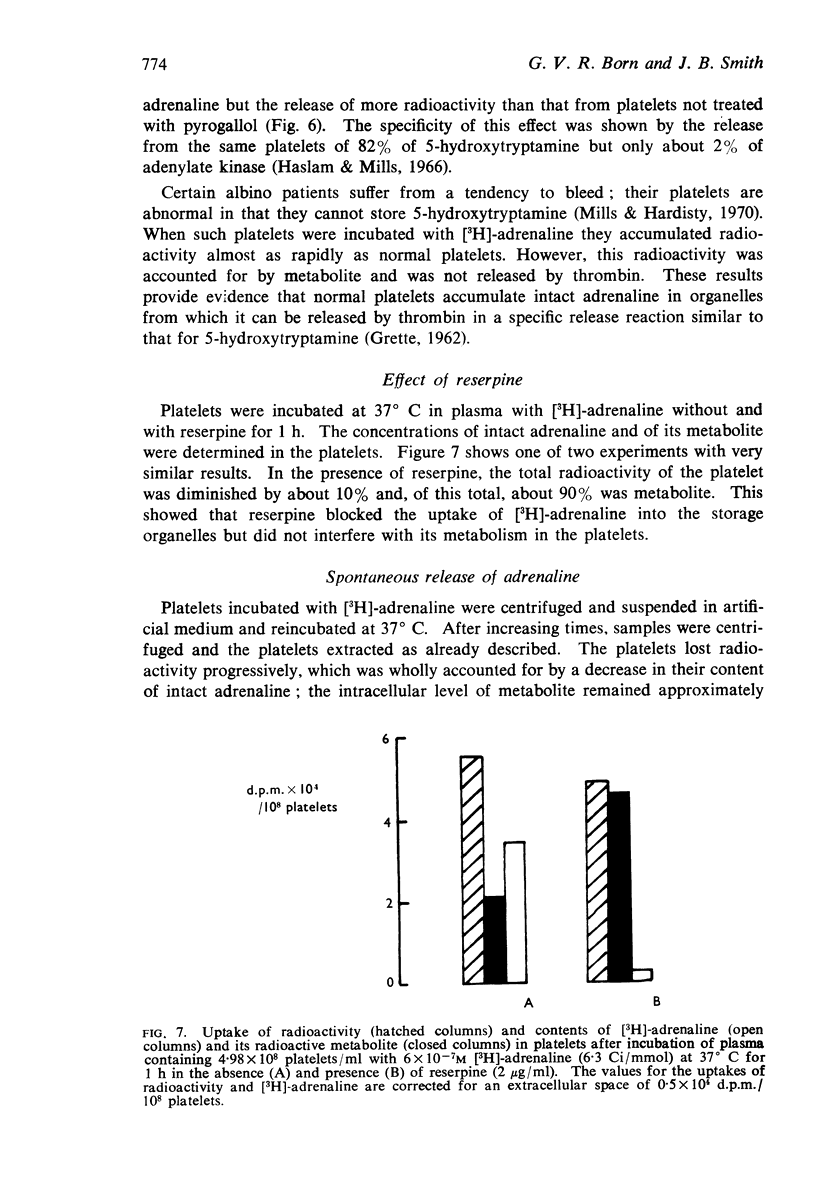

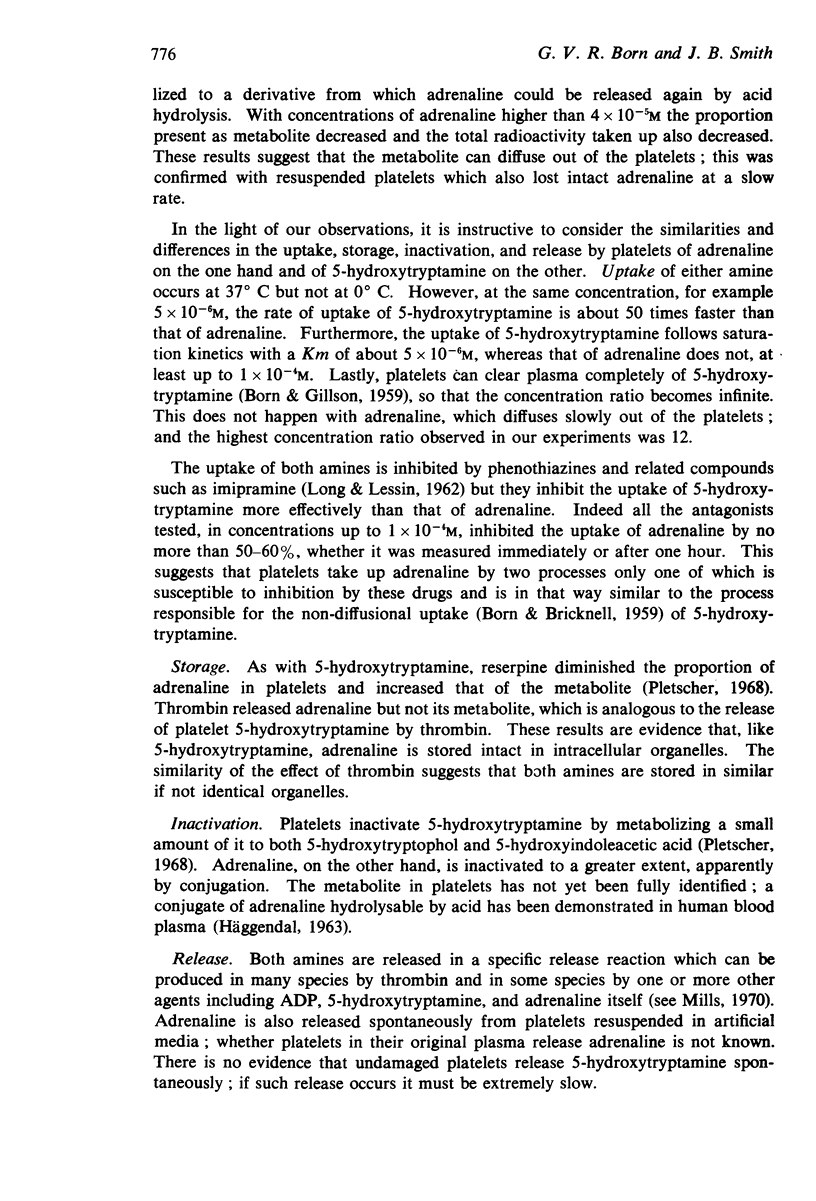
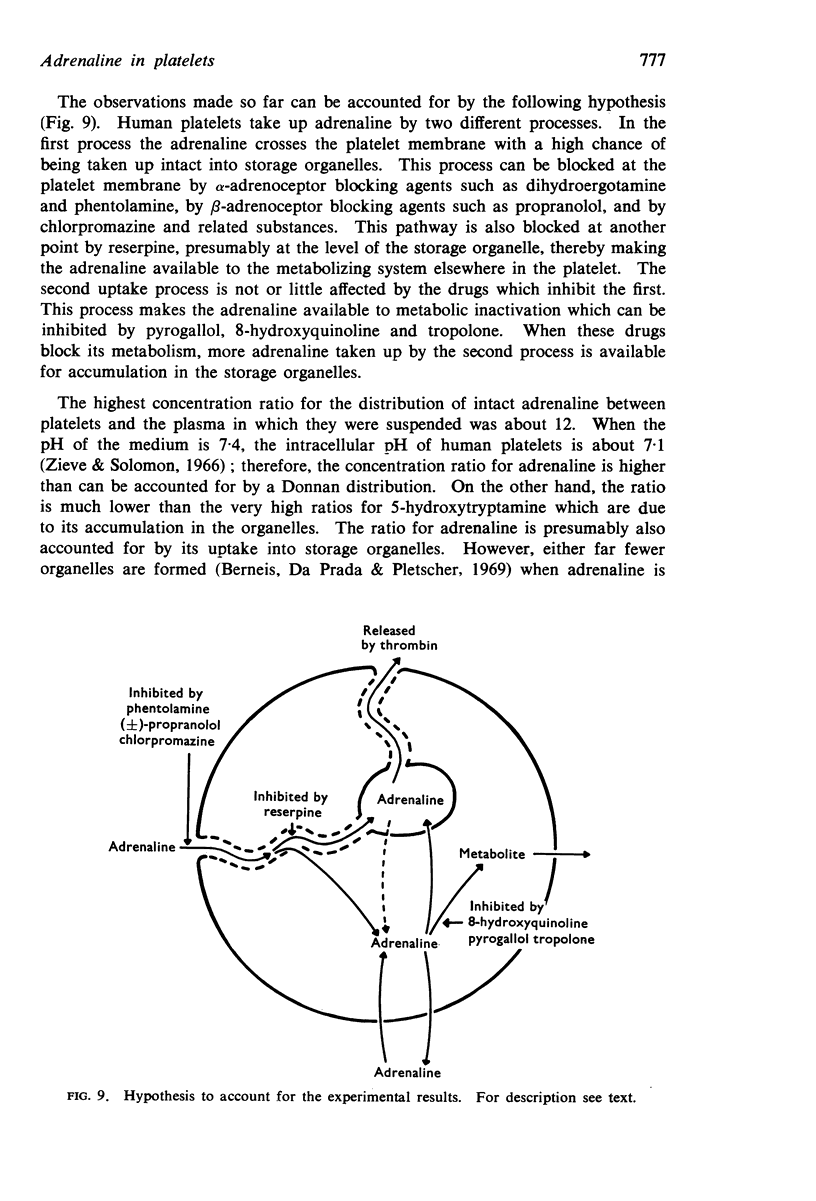
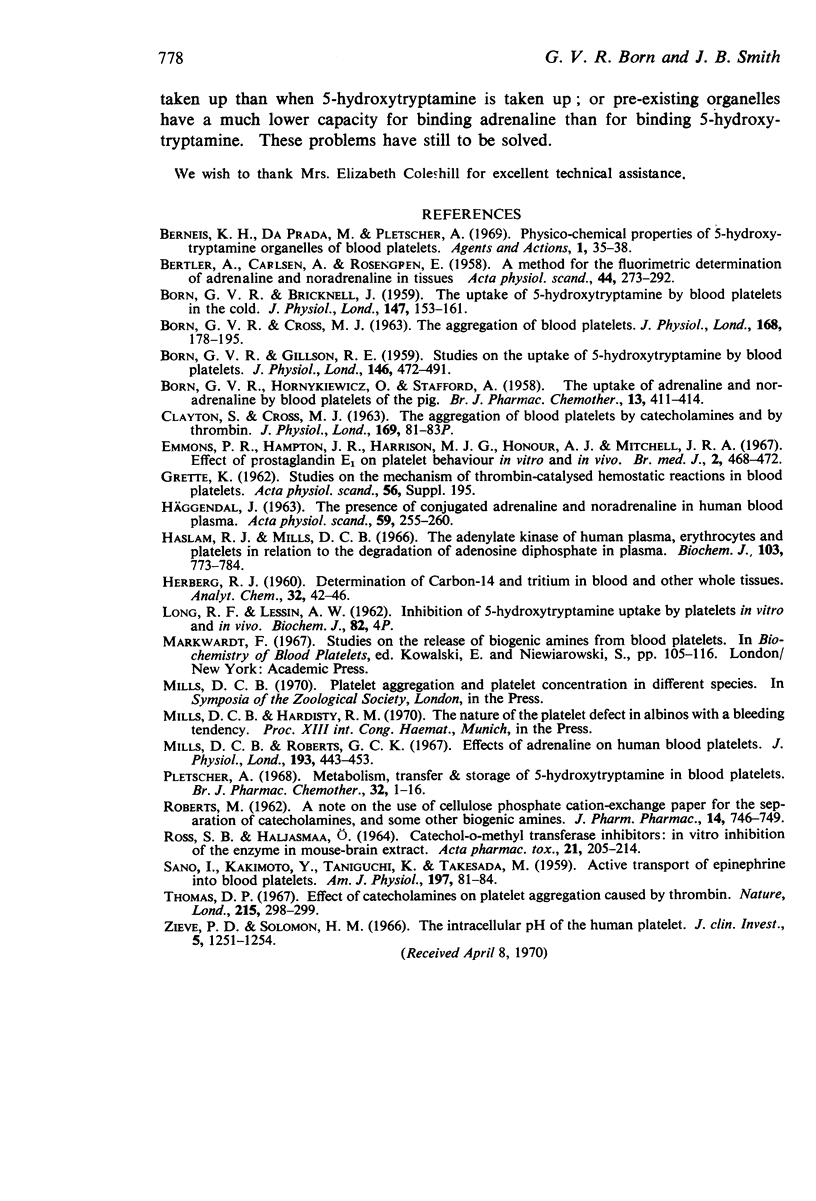
Selected References
These references are in PubMed. This may not be the complete list of references from this article.
- BERTLER A., CARLSSON A., ROSENGREN E. A method for the fluorimetric determination of adrenaline and noradrenaline in tissues. Acta Physiol Scand. 1958 Dec 15;44(3-4):273–292. doi: 10.1111/j.1748-1716.1958.tb01627.x. [DOI] [PubMed] [Google Scholar]
- BORN G. V., BRICKNELL J. The uptake of 5-hydroxytryptamine by blood platelets in the cold. J Physiol. 1959 Jun 23;147(1):153–161. doi: 10.1113/jphysiol.1959.sp006230. [DOI] [PMC free article] [PubMed] [Google Scholar]
- BORN G. V., CROSS M. J. THE AGGREGATION OF BLOOD PLATELETS. J Physiol. 1963 Aug;168:178–195. doi: 10.1113/jphysiol.1963.sp007185. [DOI] [PMC free article] [PubMed] [Google Scholar]
- BORN G. V., GILLSON R. E. Studies on the uptake of 5-hydroxytryptamine by blood platelets. J Physiol. 1959 Jun 11;146(3):472–491. doi: 10.1113/jphysiol.1959.sp006206. [DOI] [PMC free article] [PubMed] [Google Scholar]
- BORN G. V., HORNYKIEWICZ O., STAFFORD A. The uptake of adrenaline and noradrenaline by blood platelets of the pig. Br J Pharmacol Chemother. 1958 Dec;13(4):411–414. doi: 10.1111/j.1476-5381.1958.tb00230.x. [DOI] [PMC free article] [PubMed] [Google Scholar]
- Berneis K. H., Da Prada M., Pletscher A. Physico-chemical properties of 5-hydroxytryptamine organelles of blood platelets. Agents Actions. 1969 Jul;1(1):35–38. doi: 10.1007/BF01990018. [DOI] [PubMed] [Google Scholar]
- Emmons P. R., Hampton J. R., Harrison M. J., Honour A. J., Mitchell J. R. Effect of prostaglandin E1 on platelet behaviour in vitro and in vivo. Br Med J. 1967 May 20;2(5550):468–472. doi: 10.1136/bmj.2.5550.468. [DOI] [PMC free article] [PubMed] [Google Scholar]
- HAEGGENDAL J. THE PRESENCE OF CONJUGATED ADRENALINE AND NORADRENALINE IN HUMAN BLOOD PLASMA. Acta Physiol Scand. 1963 Nov;59:255–260. doi: 10.1111/j.1748-1716.1963.tb02740.x. [DOI] [PubMed] [Google Scholar]
- Haslam R. J., Mills D. C. The adenylate kinase of human plasma, erythrocytes and platelets in relation to the degradation of adenosine diphosphate in plasma. Biochem J. 1967 Jun;103(3):773–784. doi: 10.1042/bj1030773. [DOI] [PMC free article] [PubMed] [Google Scholar]
- Mills D. C., Roberts G. C. Effects of adrenaline on human blood platelets. J Physiol. 1967 Nov;193(2):443–453. doi: 10.1113/jphysiol.1967.sp008369. [DOI] [PMC free article] [PubMed] [Google Scholar]
- Pletscher A. Metabolism, transfer and storage of 5-hydroxytryptamine in blood platelets. Br J Pharmacol Chemother. 1968 Jan;32(1):1–16. doi: 10.1111/j.1476-5381.1968.tb00423.x. [DOI] [PMC free article] [PubMed] [Google Scholar]
- ROBERTS M. A note on the use of cellulose phosphate cation-exchange paper for the separation of catecholamines, and some other biogenic amines. J Pharm Pharmacol. 1962 Nov;14:746–749. doi: 10.1111/j.2042-7158.1962.tb11170.x. [DOI] [PubMed] [Google Scholar]
- ROSS S. B., HALJASMAA O. CATECHOL-OMETHYL TRANSFERASE INHIBITORS. IN VITRO INHIBITION OF THE ENZYME IN MOUSE-BRAIN EXTRACT. Acta Pharmacol Toxicol (Copenh) 1964;21:205–214. doi: 10.1111/j.1600-0773.1964.tb01785.x. [DOI] [PubMed] [Google Scholar]
- SANO I., KAKIMOTO Y., TANIGUCHI K., TAKESADA M. Active transport of epinephrine into blood platelets. Am J Physiol. 1959 Jul;197(1):81–84. doi: 10.1152/ajplegacy.1959.197.1.81. [DOI] [PubMed] [Google Scholar]
- Thomas D. P. Effect of catecholamines on platelet aggregation caused by thrombin. Nature. 1967 Jul 15;215(5098):298–299. doi: 10.1038/215298a0. [DOI] [PubMed] [Google Scholar]
- Zieve P. D., Solomon H. M. The intracellular pH of the human platelet. J Clin Invest. 1966 Aug;45(8):1251–1254. doi: 10.1172/JCI105431. [DOI] [PMC free article] [PubMed] [Google Scholar]


